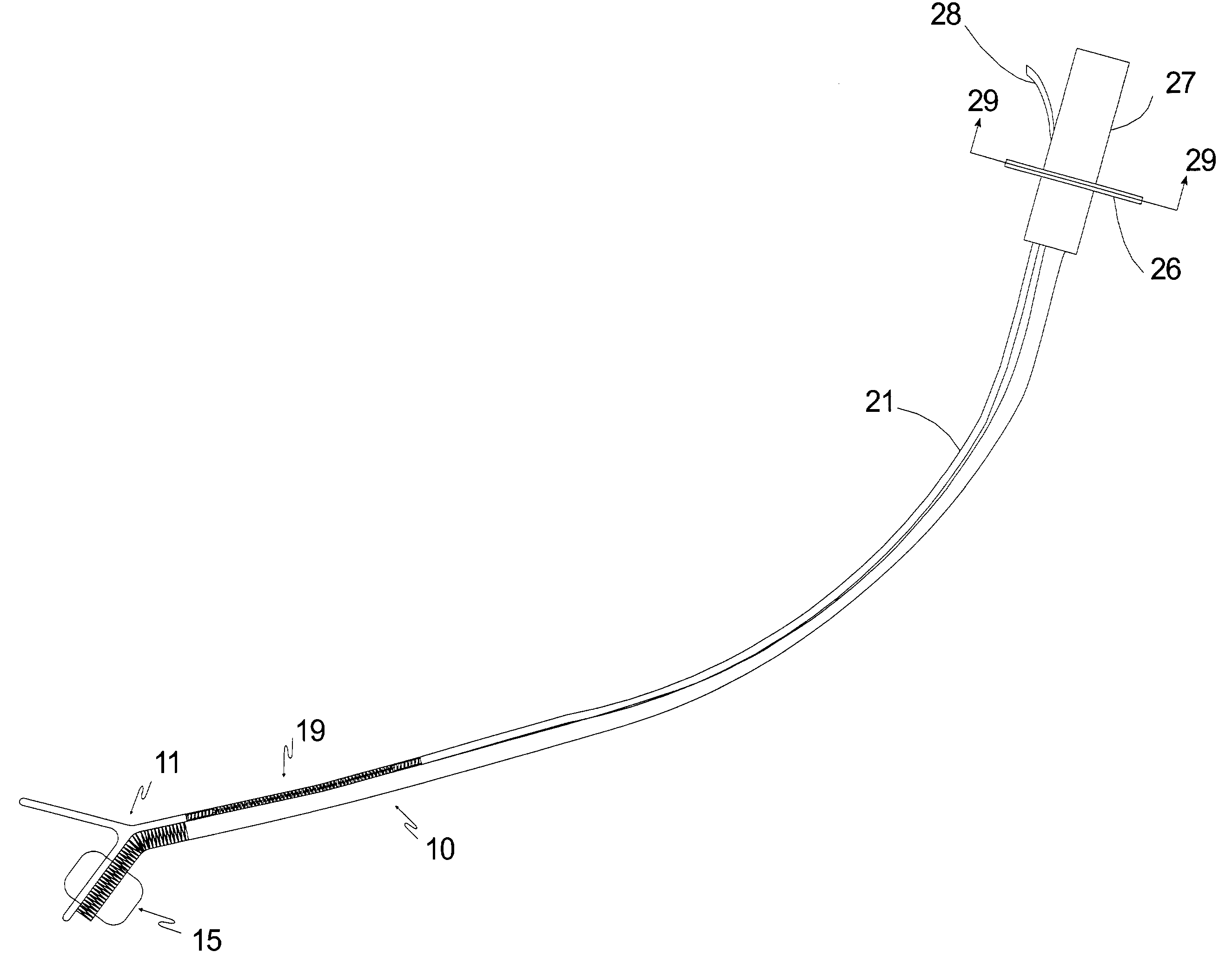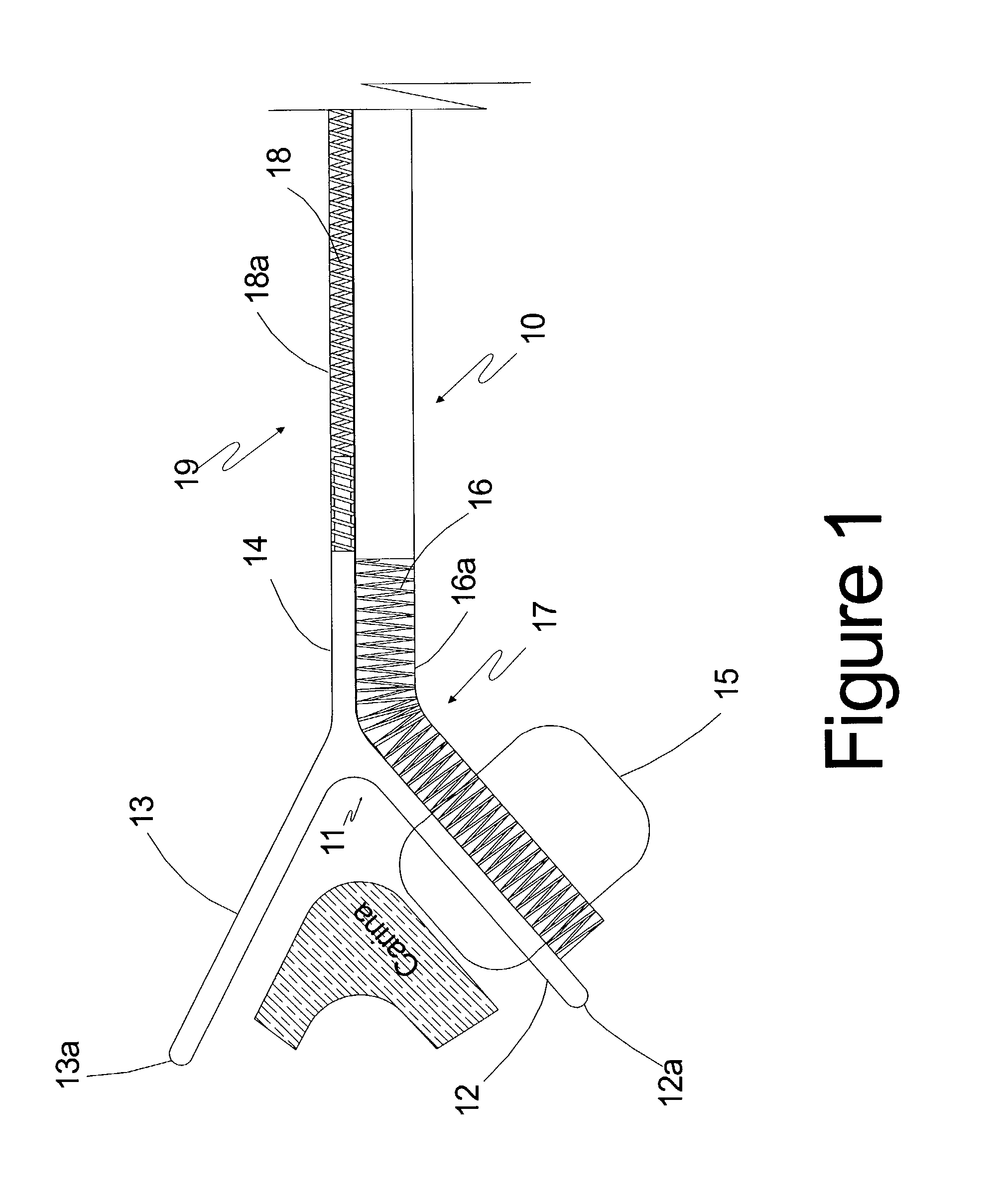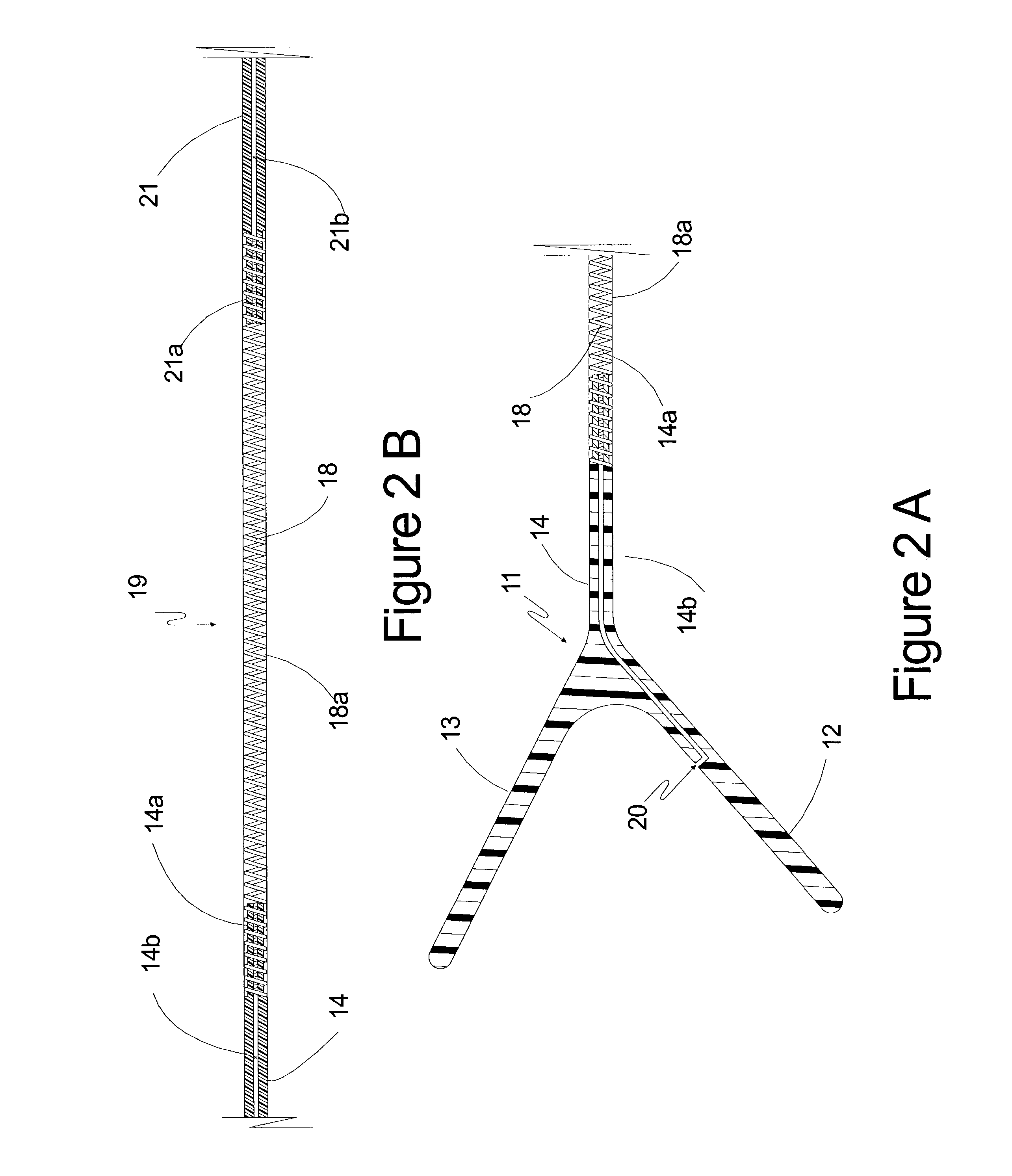Bronchial tube with an endobronchial Y-guide
a bronchial tube and endobronchial technology, applied in the field of new and improved bronchial tubes with built-in stylets and yguides, can solve the problem of difficult proper positioning of the “shaw” type of tubes
- Summary
- Abstract
- Description
- Claims
- Application Information
AI Technical Summary
Problems solved by technology
Method used
Image
Examples
Embodiment Construction
[0014]The bronchial tube 10 of this invention shown in FIG. 1 is constructed of a thin polymer such as polyurethane, silicone rubber, or other compatible elastomers and attached at its end to an endobronchial tube 17. A Y-guide 11 is attached at its end to the endobronchial tube, and the Y-guide defines end tapered left arm 12 and closed left arm 13. FIGS. 1, 2A and 2B, show the Y-guide which includes a tubular, tapered central arm 14 that is inserted into a stabilizer 19 comprising a spring coil 18 covered with a thin polymer sheath 18a. The spring stabilizer forms part of a stylet shaft 21 which will be described more fully in FIG. 3D. The endobronchial tube itself is constructed of a thin wall elastic polymer such as silicone rubber, PVC, polyurethane, or other compatible elastomers, and reinforced with a metal coil 16, as shown, or a stiff polymer, etc. The two arms 12 and 13 may be integrally formed with the tapered central arm 14, or they may be connected to the central arm by...
PUM
 Login to View More
Login to View More Abstract
Description
Claims
Application Information
 Login to View More
Login to View More - R&D
- Intellectual Property
- Life Sciences
- Materials
- Tech Scout
- Unparalleled Data Quality
- Higher Quality Content
- 60% Fewer Hallucinations
Browse by: Latest US Patents, China's latest patents, Technical Efficacy Thesaurus, Application Domain, Technology Topic, Popular Technical Reports.
© 2025 PatSnap. All rights reserved.Legal|Privacy policy|Modern Slavery Act Transparency Statement|Sitemap|About US| Contact US: help@patsnap.com



